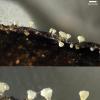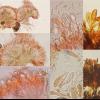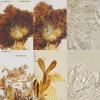
03-09-2025 12:44
Hi to somebody.I would like to know your opinion o

31-08-2025 19:41
Hi to someone.I need to download this issue of Sve

02-09-2025 11:34
Thomas Læssøehttps://svampe.databasen.org/observations/10527903

31-08-2025 17:32
 Michel Hairaud
Michel Hairaud
Bonjour, Pas d'identité trouvée pour cette réc

01-09-2025 08:42
François CorhayUn ami, conservateur d'une RN en Belgique, m'a adr

31-08-2025 14:34
Thomas FlammerI have found a Rutstroemia on abt. 2000 m on Alnus

29-08-2025 19:04
Thomas FlammerSpores 21.2 - 26.2 x 8.3 - 11.3 µm - Q: 2.20 - 2.

28-08-2025 17:24
Thomas FlammerI know, that this is not the real topic of this fo
Ascolichen on Blechnum?
Enrique Rubio,
03-09-2025 12:44
I would like to know your opinion on these apothecium-like, gregarious, whitish, pubescent, briefly stipitate fungi, up to 200 microns in height and 150-160 microns in width, which were growing on Blechnum spicant fronds on a quartzite wall that was oozing water.
The asci are bitunicate and the whole structure appears dextrinoid, as only the medulla of the fruiting body appears to turn slightly blue in IKI after KOH-pretreatment. Peculiar paraphyses with a highly refractive content can be seen, and perhaps also a pilosity formed by similar elements, although I have not been able to make a vertical section of the ascoma that would give me a good idea of the whole. Nor have I been able to clearly observe a possible thallus at the base of the stipe base.
Could this be an ascolychen?
Thank you very much for your ideas.
Hans-Otto Baral,
03-09-2025 16:31

Re : Ascolichen on Blechnum?
This must be Vezdaea stipitata (Vezdaeaceae). You had it already some years ago (2022?) on a ?liverwort.
The red ascus reaction is hemiamyloid, not dextrinoid (in MLZ without KOH you would get nothing).
I was unaware of such prominent VBs in Lecanorales, staining deep red-brown in IKI. Very probably the family is misplaced there. Available DNA does not give a clear hint on their relationship. Syllabus gives it as Vezdaeales in Xylonomycetes while in the Outline 2024 it is Vezdaeales in Pezizomycetes incertae sedis.


